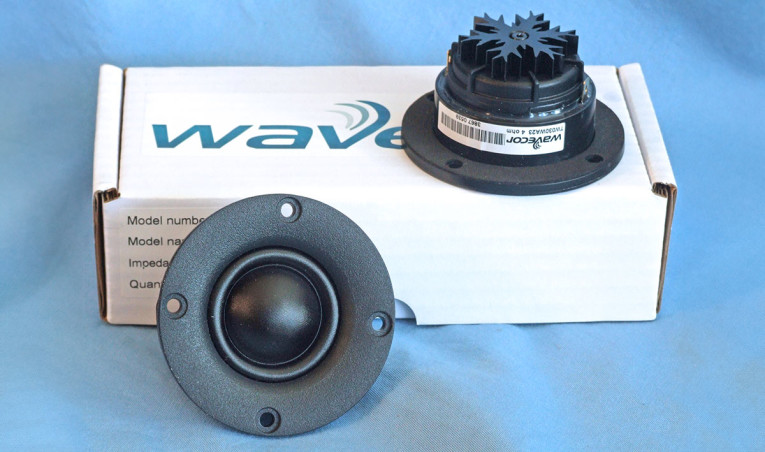
Voice Coil’s Test Bench featured the original full rear cavity version of this 30mm tweeter, the TW030WA08, in December 2009; the non-cavity low-resonance version, the TW030WA09, in August 2012; the TW030WA12 30mm waveguide version in January 2015; and the TW030WA13-14, upon which the TW030WA23/24 is based, in April 2015.
While the TW030WA23/24 have a very similar feature set to the Wavecor TW030WA13/14 tweeters, the biggest difference is a new Graphene reinforced textile (Tetoron) 30mm soft dome. Like the TW030WA13/14, the feature set for the TW030WA23/24 includes a 30mm wide surround precision-coated cloth diaphragm optimized for high-frequency cutoff above 20kHz, internal chambers below the dome and surround, copper-clad aluminum voice coil winding with a vented voice coil former, flexible lead wires for large excursions with crossovers below 3kHz, 94dB sensitivity, black anodized motor parts for enhanced cooling including a rear mounted aluminum heatsink, a copper-clad pole piece (shorting ring), a foam mounting gasket on the face plate, plus gold-plated terminals.
Testing commenced using the LinearX LMS analyzer to produce the 300-point impedance sweep for the TW030WA23 4Ω version illustrated in Figure 1. The resonance for the TW030WA23 occurs at a moderately low 725Hz. Factory quoted Qts for the TW030WA13 4Ω version is 1.10 (1.24 for the 8Ω model). The measured DCR for the 4Ω version was 3.5Ω with a minimum impedance above resonance of 3.73Ω at 3.12kHz.

Next, I recess mounted the tweeter in an enclosure that had a baffle area of 14”×7” and measured the horizontal on- and off-axis at 2.0V/0.5m (normalized to 2.83V/1m) from 0° on-axis to 45° off-axis using the Loudsoft FINE R+D analyzer and the GRAS 46BE microphone (supplied courtesy of Loudsoft and GRAS Sound & Vibration). Figure 2 shows the on-axis response for the TW030WA23, which exhibited a ±2dB response from 2kHz to 33kHz. If you look at the operating range from 3kHz to 33kHz, it would be a very flat ±1.25dB.
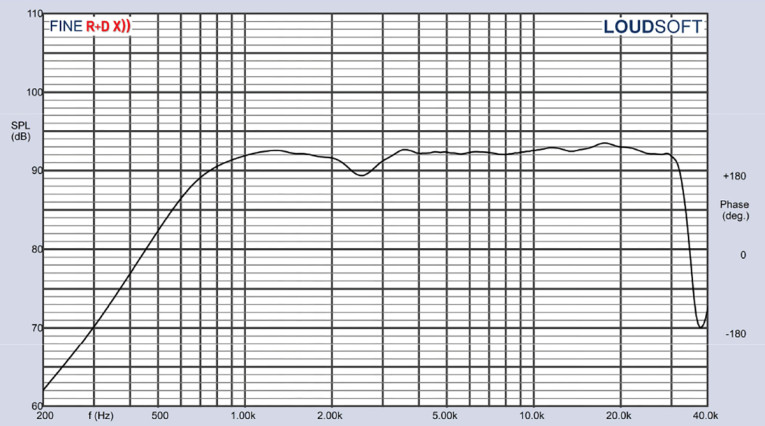
Figure 3 depicts the on- and off-axis response of TW030WA23, with the off-axis curves normalized to the on-axis response shown in Figure 4. Figure 5 shows the 180° horizontal polar plot (in 10° increments with 1/3 octave smoothing applied), generated by the CLIO Pocket analyzer and accompanying microphone (courtesy of Audiomatica SRL). Last, Figure 6 gives the two-sample SPL comparison showing the two Wavecor TW030WA23 samples to be closely matched within ≤1dB throughout the drivers operating range to 15kHz, and within 1dB to 2dB from 15kHz to 33kHz.


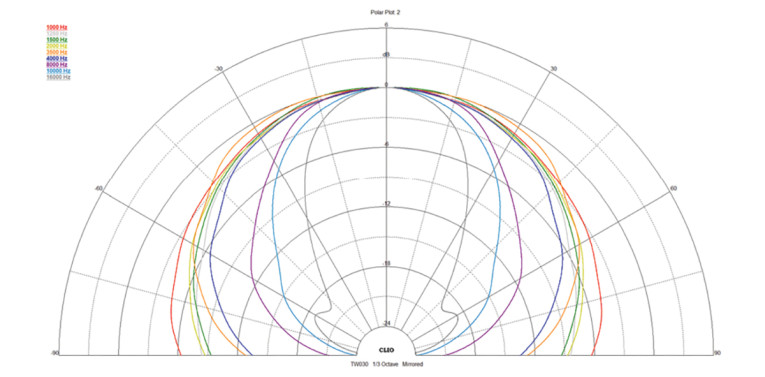
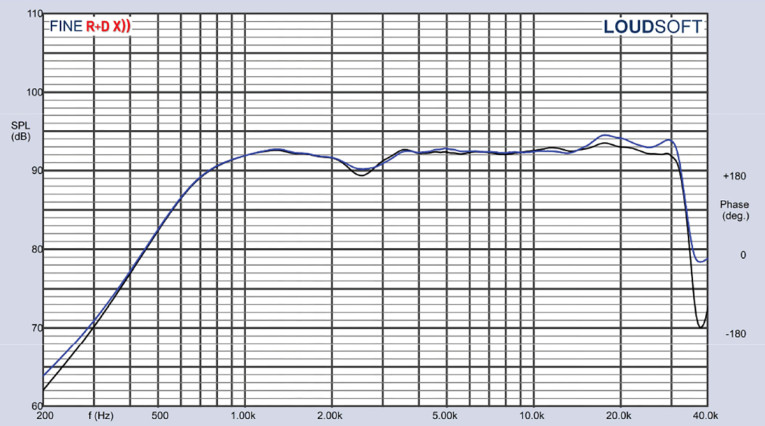
For the next test procedure, I used the Listen SoundCheck software and the AudioConnect analyzer and SCM ¼” microphone to measure the impulse response with the tweeter recess mounted on the test baffle. Importing this data for the TW030WA23 into the Listen SoundMap software produced the cumulative spectral decay (CSD) waterfall plot shown in Figure 7. Figure 8 depicts the Short Time Fourier Transform (STFT) displayed as a color variegated surface plot.
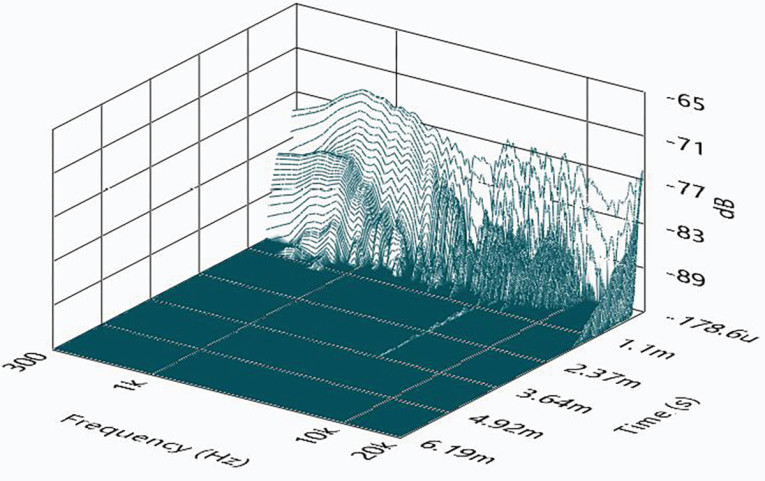
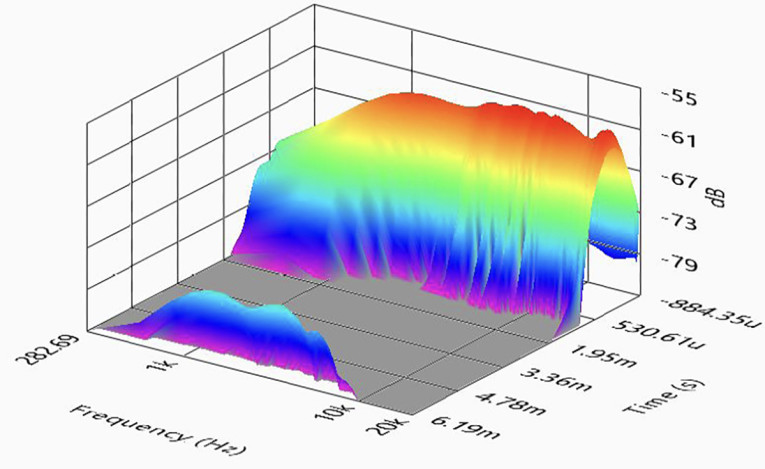
For the final test procedure, I set the 1m SPL to 94dB (3.4V for the 4Ω version) using a pink noise stimulus and measured the second and third harmonic distortion at 10cm. The data depicted in Figure 9 demonstrates very low third harmonic content.
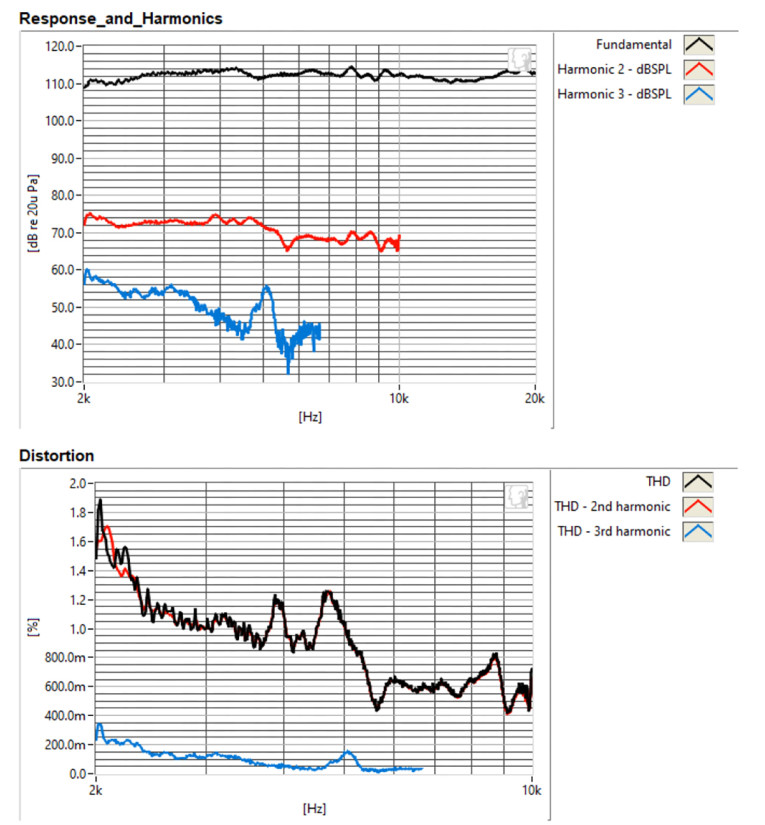
This article was originally published in Voice Coil, October 2023.







